Table of Contents
ToggleTop 10 Free AI Courses to Jumpstart Your Tech Career
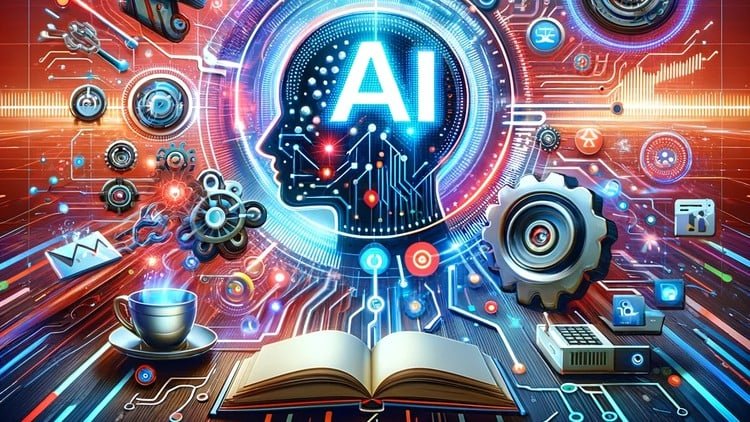
Top 10 Free AI Courses to Jumpstart Your Tech Career
Are you looking to break into the world of artificial intelligence without spending a dime? Taking a Free AI Course is the perfect way to jumpstart your tech career. With AI skills in high demand across industries like healthcare, finance, marketing, and robotics, learning the basics can open countless career doors. Whether you’re a student, a working professional, or someone switching fields, there’s a Free AI Course that fits your learning style and schedule.
One major advantage of a Free AI Course is accessibility. These courses are available online from top universities and platforms like Stanford, MIT, Coursera, Udacity, and edX. Many of them offer certificates upon completion, adding value to your resume and LinkedIn profile. By choosing a Free AI Course, you avoid the high cost of traditional education while still gaining skills that are highly respected in the job market.
A solid Free AI Course usually starts with the fundamentals—what AI is, how machine learning works, and the basics of neural networks. These introductory lessons help learners understand core concepts like supervised learning, unsupervised learning, and deep learning. With real-world case studies, interactive quizzes, and project-based tasks, a Free AI Course keeps learning engaging and practical.
Moreover, many platforms now integrate hands-on coding into their AI curriculums. A Free AI Course might include Python programming exercises, data visualization projects, and the use of libraries like TensorFlow or Scikit-learn. These practical components ensure that learners not only understand the theory but can also apply AI techniques in real-life projects. As a result, even a beginner with no tech background can feel confident building their first AI model.
Another reason to choose a Free AI Course is flexibility. Most are self-paced, allowing you to learn during your free time without disrupting your job or studies. Whether you spend an hour a day or dive in on weekends, the learning path can be tailored to your availability. Some courses also offer community forums, mentorship, and peer support to help you stay motivated.
The job market for AI professionals is expanding rapidly. Completing a Free AI Course can lead to entry-level roles such as AI Analyst, Data Scientist, or Machine Learning Engineer. Many recruiters and companies value candidates who show initiative and curiosity—exactly the kind of traits reflected in someone who takes a Free AI Course independently. Even if you’re not ready for a job switch, the knowledge you gain will strengthen your current role by allowing you to use AI tools to solve problems more efficiently.
Choosing the right Free AI Course depends on your goals. If you’re just exploring AI, go for an introductory course that covers the basics in simple terms. If you already have some programming knowledge, choose an intermediate or advanced course that includes real-world projects. Look for courses with good reviews, clear structure, and updated content to ensure you’re learning the latest in AI trends and tools.
In conclusion, investing your time in a Free AI Course is a smart and strategic move to advance your career. With no financial commitment and access to high-quality content, it’s never been easier to gain AI skills that employers seek. Whether you’re aiming for a job in tech or just want to future-proof your knowledge, a Free AI Course offers the stepping stone you need to move forward in today’s digital economy.
History and Evolution of AI
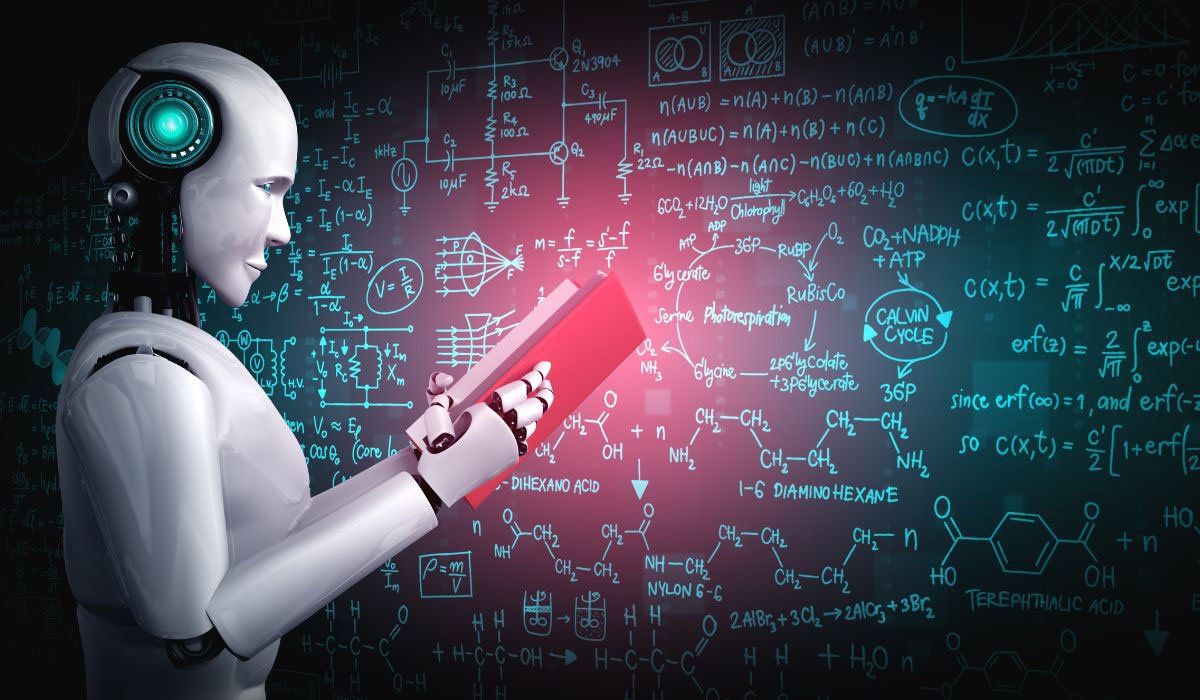
History and Evolution of AI
Artificial Intelligence (AI) has become a transformative force in the 21st century, revolutionizing everything from business operations to everyday life. However, AI’s journey didn’t begin overnight. It’s the result of decades of research, experimentation, and innovation. Understanding the history and evolution of AI not only provides context but also helps learners appreciate the depth and potential of this ever-growing field. This module is a core part of any comprehensive Free AI Course.
The Origins of AI: Pre-20th Century Ideas
The idea of intelligent machines isn’t new. Philosophers and inventors have long imagined mechanical beings capable of thinking and reasoning. Ancient Greek myths featured intelligent automatons, and philosophers like Aristotle laid the groundwork for logical reasoning, a concept essential to AI.
During the Renaissance, inventors like Leonardo da Vinci sketched designs of self-operating machines. While these were far from AI in today’s sense, they reflected early human curiosity about artificial thought and automation.
The Birth of Modern AI: 1940s–1950s
AI began to take shape as a scientific field in the 1940s and 1950s with the invention of modern computers. These machines could store and process data, which made researchers believe they could eventually simulate human intelligence.
In 1950, Alan Turing proposed the famous Turing Test in his paper “Computing Machinery and Intelligence,” asking, “Can machines think?” This test remains a foundational concept in AI even today.
The term “Artificial Intelligence” was officially coined in 1956 during the Dartmouth Conference, organized by John McCarthy, Marvin Minsky, Nathaniel Rochester, and Claude Shannon. This event marked the beginning of AI as a formal field of study.
The First AI Programs: 1950s–1970s
Early AI research was promising. Programs like Logic Theorist and ELIZA simulated problem-solving and natural conversation. These early successes led to optimism and significant government funding, particularly in the U.S.
However, AI at the time lacked the computing power and data necessary for complex tasks. This led to a period of slow progress and skepticism, known as the AI Winter, in the 1970s. Funding was cut, and interest waned.
The AI Winters and Their Lessons: 1970s–1990s
There were two major AI winters (late 1970s and late 1980s) when promises failed to match results. But these periods were not without value. Researchers used this time to refine AI theories, develop programming languages like LISP and Prolog, and explore expert systems—early forms of AI that mimicked decision-making in specific fields.
The lessons learned during this time helped pave the way for the future success of AI.
The Rise of Machine Learning: 1990s–2000s
In the 1990s, interest in AI reemerged with the development of Machine Learning—a technique where machines improve at tasks through experience. Algorithms like decision trees, support vector machines, and neural networks gained traction.
One major milestone was IBM’s Deep Blue defeating world chess champion Garry Kasparov in 1997. This marked a public and technological turning point, showcasing that AI could outperform humans in strategic thinking.
The Deep Learning Era: 2010s–Present
The 2010s saw explosive growth in Deep Learning, a subset of machine learning that uses large neural networks. Thanks to vast data availability and powerful GPUs, AI began to achieve incredible feats—such as Google’s AlphaGo beating top Go players and self-driving cars navigating complex environments.
Today’s AI applications span voice recognition, facial detection, healthcare diagnostics, customer support, and more. Learners in a Free AI Course can now access tools and platforms previously limited to experts and researchers.
AI Today and Tomorrow
AI is now a critical part of global innovation strategies. It is integrated into smartphones, home appliances, education, and national security. Tech giants like Google, Microsoft, and OpenAI are pushing AI boundaries with generative models and large language models like ChatGPT.
The next phase may include Artificial General Intelligence (AGI)—a system capable of learning any intellectual task a human can do. While AGI is still theoretical, AI’s current growth trajectory shows no sign of slowing down.
Applications of AI in Daily Life

Applications of AI in Daily Life
Artificial Intelligence (AI) has quickly moved from research labs into the hands of everyday users. From the moment you wake up to the time you go to sleep, AI touches almost every aspect of your routine—often without you even realizing it. These real-world applications of AI enhance convenience, increase productivity, and simplify complex tasks.
1. Smart Assistants and Voice Recognition
Virtual assistants like Google Assistant, Siri, Alexa, and Cortana are some of the most popular AI-powered tools. These systems recognize voice commands and carry out tasks such as setting alarms, playing music, sending messages, and answering questions. Their ability to understand natural language and provide relevant responses is powered by AI algorithms and Natural Language Processing (NLP).
2. Personalized Recommendations
Whether you’re watching movies on Netflix, shopping on Amazon, or scrolling through YouTube and Spotify, AI analyzes your behavior and preferences to recommend content or products. These personalized experiences are made possible through machine learning, which learns from your previous interactions to predict what you’ll like next.
3. Social Media and Content Filtering
AI plays a crucial role in platforms like Facebook, Instagram, and TikTok, helping filter content, detect inappropriate behavior, and curate your feed based on your interests. It also powers facial recognition features used in tagging friends or unlocking phones.
4. Email Filtering and Smart Replies
Spam filters in Gmail and other email services use AI to detect and block unwanted or harmful messages. Additionally, smart replies and grammar suggestions in emails and documents are AI-driven tools designed to improve communication efficiency.
5. Navigation and Ride-Sharing
Applications like Google Maps, Uber, and Ola use AI to analyze traffic data, suggest optimal routes, estimate arrival times, and assign drivers to passengers. These services rely heavily on real-time data processing and predictive modeling.
6. Healthcare Apps and Wearables
AI is increasingly integrated into fitness wearables like Fitbit and Apple Watch, which monitor heart rate, sleep patterns, and activity levels. AI algorithms provide health suggestions, detect abnormalities, and even alert users in emergencies.
7. Smart Home Devices
Home automation tools—such as smart thermostats, security cameras, and lighting systems—use AI to learn your preferences and adjust settings automatically for comfort, energy efficiency, and safety
Types of AI: ANI, AGI, ASI
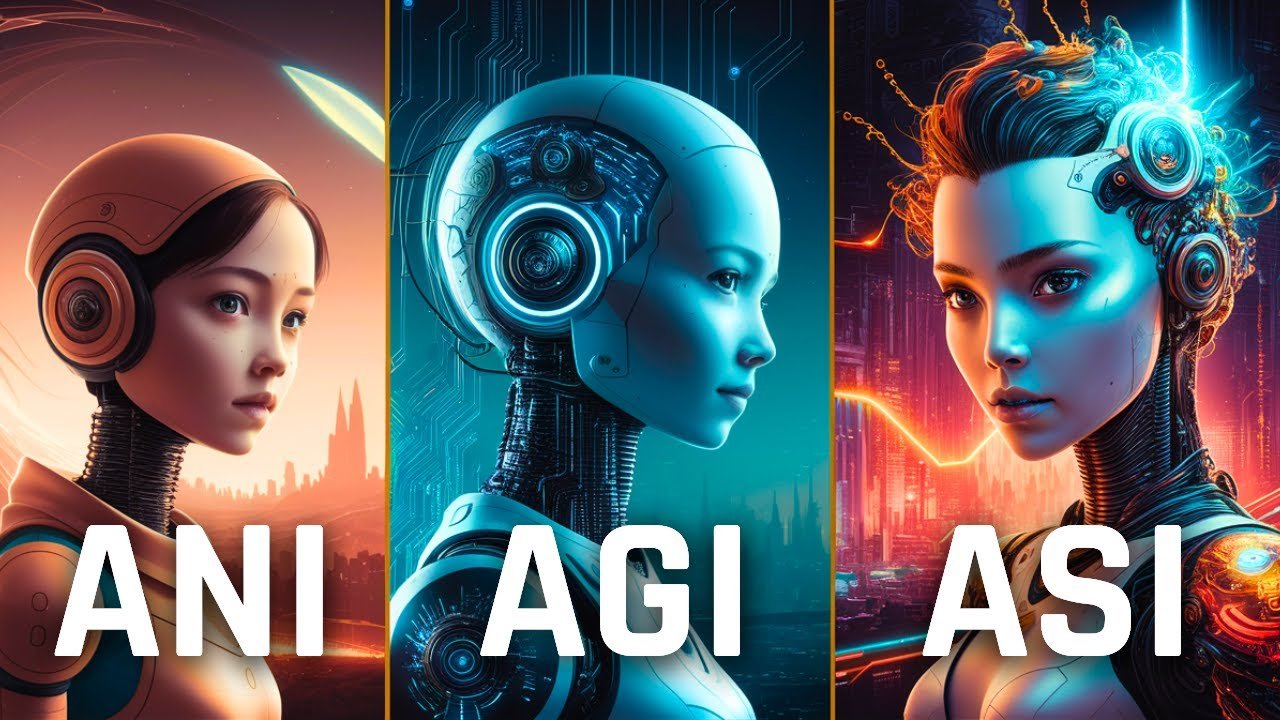
Types of AI: ANI, AGI, ASI
Artificial Intelligence (AI) can be categorized into three major types based on its capabilities: ANI (Artificial Narrow Intelligence), AGI (Artificial General Intelligence), and ASI (Artificial Super Intelligence). Understanding these types is crucial for grasping the scope and future of AI, especially for learners enrolled in a Free AI Course.
1. ANI – Artificial Narrow Intelligence
Also known as Weak AI, ANI is designed to perform a single or narrow task. It operates within a predefined, limited scope and cannot go beyond what it is programmed to do.
Examples:
Voice assistants like Siri and Alexa
Recommendation systems on Netflix or Amazon
Image recognition software
Chatbots and spam filters
Despite being “narrow,” ANI is incredibly powerful and already integrated into our daily lives. All AI in use today—whether in finance, healthcare, or social media is categorized as ANI.
2. AGI – Artificial General Intelligence
AGI, or Strong AI, refers to machines that possess the ability to understand, learn, and apply knowledge across a wide range of tasks—just like a human being. It would be capable of reasoning, solving unfamiliar problems, and adapting to new environments.
AGI is still theoretical and has not yet been achieved. Researchers around the world are working toward building AGI, but significant technical and ethical challenges remain.
If achieved, AGI would:
Learn new skills without explicit programming
Possess consciousness or self-awareness
Understand context and emotion
AGI is one of the most debated topics in AI development and represents the next major leap after ANI.
3. ASI – Artificial Super Intelligence
ASI refers to AI that surpasses human intelligence in all aspects—from decision-making to creativity and emotional intelligence. It is a hypothetical form of AI that would be far more capable than the brightest human minds.
Potential capabilities of ASI:
Problem-solving at an unimaginable scale
Controlling complex systems like global economies or space technologies
Making ethical or philosophical judgments better than humans
While ASI is still a futuristic concept, it raises serious questions about ethics, safety, and control. Many experts, including Elon Musk and Stephen Hawking, have warned about the possible risks of uncontrolled ASI development.
Key Concepts in AI (ML, DL, NLP)

Key Concepts in AI (ML, DL, NLP)
Artificial Intelligence (AI) is a broad and evolving field, but three core technologies form the foundation of most real-world AI applications: Machine Learning (ML), Deep Learning (DL), and Natural Language Processing (NLP). These key concepts enable machines to learn, make decisions, and interact with humans in intelligent ways. Understanding these terms is essential for anyone taking a Free AI Course or stepping into the world of intelligent systems.
1. Machine Learning (ML)
Machine Learning is a subset of AI that allows machines to learn from data and experience without being explicitly programmed. Instead of writing code for every task, you provide a system with data and let it learn patterns and make predictions.
Types of ML:
Supervised Learning: The algorithm is trained on labeled data (e.g., email spam detection).
Unsupervised Learning: The system finds patterns in unlabeled data (e.g., customer segmentation).
Reinforcement Learning: The algorithm learns by interacting with an environment and receiving rewards or penalties (e.g., game-playing AI).
Real-Life Example: Netflix recommending shows based on your watch history.
2. Deep Learning (DL)
Deep Learning is a specialized area within Machine Learning that uses neural networks—especially deep neural networks with many layers. It excels at processing large volumes of complex, unstructured data like images, audio, and video.
Deep Learning is used for:
Image and facial recognition
Autonomous vehicles
Language translation
Voice assistants
Why It Matters: DL mimics how the human brain works (though not perfectly), enabling AI to make sense of high-dimensional data in real time.
3. Natural Language Processing (NLP)
Natural Language Processing (NLP) enables machines to understand, interpret, and generate human language. It bridges the gap between human communication and computer understanding.
Applications of NLP:
Chatbots (like ChatGPT)
Sentiment analysis on social media
Language translation tools
Voice-to-text systems
Example: Gmail’s smart reply suggestions use NLP to understand and generate relevant responses.
Fundamentals of Machine Learning

Fundamentals of Machine Learning
Machine Learning (ML) is one of the most essential building blocks of Artificial Intelligence. It is the science of enabling computers to learn from data and make decisions or predictions without being explicitly programmed. Whether you’re using Google Maps, shopping on Amazon, or watching YouTube, Machine Learning is behind the scenes, helping systems understand, recommend, and optimize. This topic is a core part of any structured Free AI Course, helping learners grasp how smart applications are built.
What is Machine Learning?
Machine Learning is a subset of AI that uses algorithms to identify patterns in data, learn from them, and make intelligent decisions. Instead of manually writing rules for every possible situation, developers feed large datasets into ML models, which then generalize and apply the patterns they learn.
For example, a machine learning model trained on thousands of images of cats and dogs can learn to distinguish between them—even when shown new images it has never seen before.
How Machine Learning Works (The Basic Process)
Collect Data
The first step is gathering relevant data. This could be sales data, photos, speech recordings, or user behavior.Prepare the Data
The data is cleaned, organized, and formatted so that the ML algorithm can understand and process it.Choose a Model
A mathematical model (like linear regression or decision trees) is selected based on the problem type.Train the Model
The model is fed training data so it can learn patterns and relationships.Test and Evaluate
The trained model is tested with new (unseen) data to check how accurately it performs.Deploy and Improve
Once working well, the model is deployed into real applications and improved continuously as more data comes in.
Types of Machine Learning
There are three main types of ML, each suited to different tasks:
1. Supervised Learning
In supervised learning, the data includes both inputs and known outputs (called labels). The model learns from this labeled data to predict outcomes.
Example:
Predicting house prices based on features like size, location, and number of bedrooms.
2. Unsupervised Learning
Here, the model is given unlabeled data and must find patterns or groupings on its own.
Example:
Customer segmentation—grouping shoppers based on their buying habits.
3. Reinforcement Learning
In this type, the model learns by interacting with its environment and receiving feedback through rewards or penalties.
Example:
A robot learning to walk by trying, falling, and learning what movements work best.
Popular Machine Learning Algorithms
Some commonly used ML algorithms include:
Linear Regression – Predicts numerical values
Logistic Regression – Used for binary classification (yes/no)
Decision Trees and Random Forests – Great for both classification and regression
Support Vector Machines (SVM) – Works well with high-dimensional data
K-Means Clustering – Used in unsupervised learning
Neural Networks – Used for deep learning and complex pattern recognition
Real-Life Applications of Machine Learning
Email filtering (spam vs. non-spam)
Fraud detection in banking
Product recommendations in e-commerce
Speech recognition in smart assistants
Medical diagnosis based on test results
These examples highlight why Machine Learning is such a crucial skill today—and why it’s a key module in any Free AI Course designed to prepare you for the future.
Understanding Deep Learning
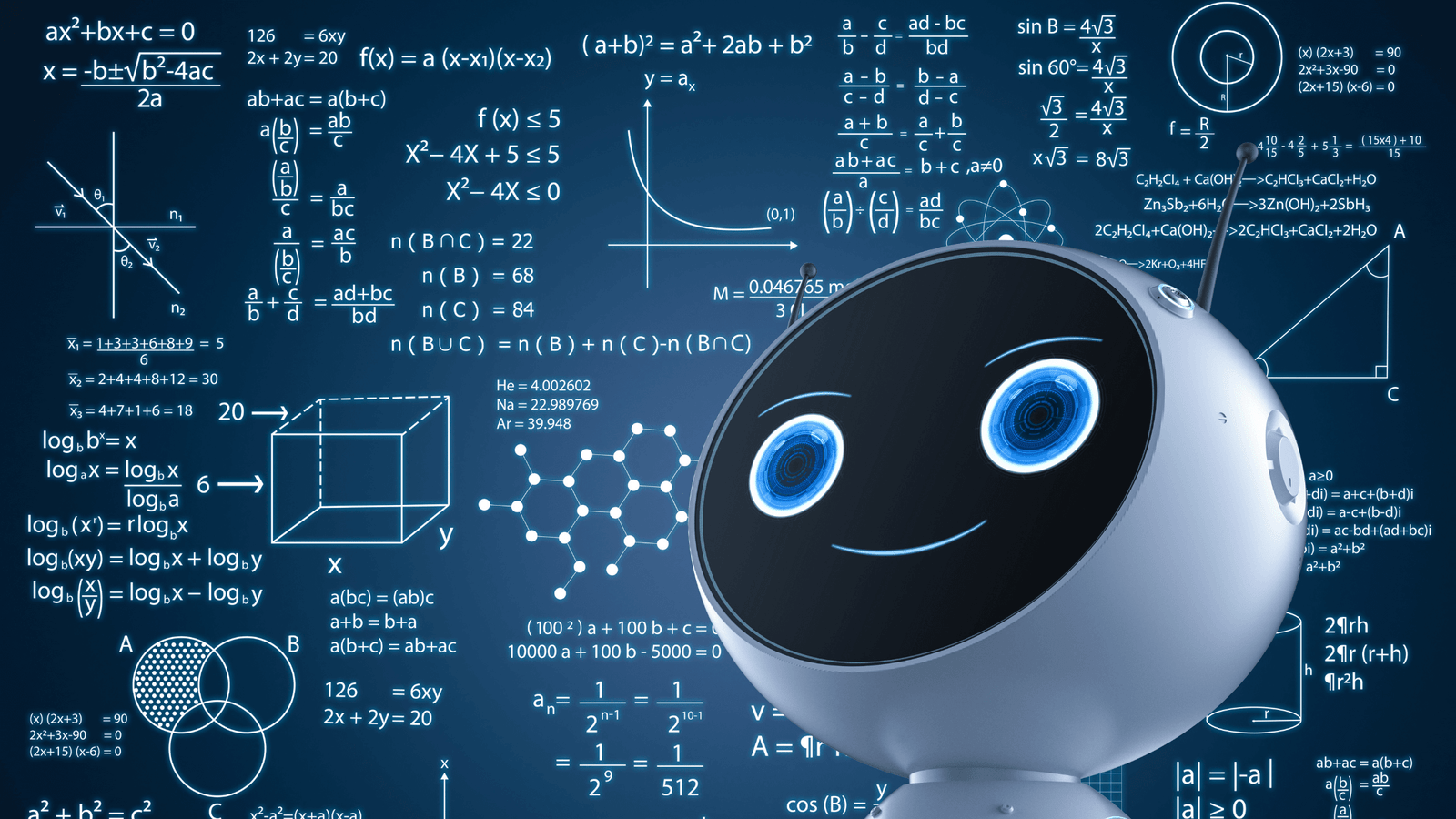
Understanding Deep Learning
Deep Learning is a powerful subset of Machine Learning that mimics how the human brain works—using algorithms called artificial neural networks. These networks are designed to recognize patterns in large and complex data such as images, audio, and text.
While traditional machine learning requires manual feature extraction (like identifying the edges of an object in an image), deep learning models automatically learn these features during training. This makes them ideal for tasks like facial recognition, speech-to-text, self-driving cars, and medical image analysis.
At the core of deep learning are neural networks. These consist of layers of nodes (or “neurons”) that process input data, adjust weights, and pass the information forward. The “deep” in deep learning refers to the use of many layers—often called deep neural networks.
Key Features of Deep Learning:
Requires large amounts of data and computational power
Learns directly from raw data without manual intervention
Continues to improve accuracy as more data is introduced
Popular deep learning frameworks include TensorFlow, Keras, and PyTorch, which make it easier for developers to build and train models.
Deep Learning is behind many AI breakthroughs seen in recent years, including language models like ChatGPT and image generation tools. Learning its fundamentals is essential for those enrolled in a Free AI Course, as it opens doors to advanced AI applications.
Natural Language Processing Basics

Natural Language Processing Basics
Natural Language Processing (NLP) is a branch of Artificial Intelligence that enables machines to understand, interpret, and respond to human language. It bridges the gap between computers and human communication, allowing machines to process written and spoken language in a meaningful way.
NLP combines techniques from linguistics, computer science, and machine learning to perform tasks such as language translation, sentiment analysis, speech recognition, and chatbot conversations.
Key Components of NLP:
Tokenization – Breaking text into individual words or phrases.
Part-of-Speech Tagging – Identifying words as nouns, verbs, adjectives, etc.
Named Entity Recognition (NER) – Detecting names of people, places, or organizations.
Syntax and Semantic Analysis – Understanding grammar and meaning.
Sentiment Analysis – Determining emotional tone (positive, negative, neutral).
For example, when you ask your voice assistant, “What’s the weather like today?”, NLP helps the system understand your intent and generate a relevant answer.
Real-Life Applications:
Chatbots and virtual assistants like Siri or Alexa
Email filtering (spam detection)
Language translation (Google Translate)
Customer service automation
Text summarization and keyword extraction
NLP is a fast-growing area of AI with immense practical value. For students and professionals taking a Free AI Course, understanding the basics of NLP opens doors to developing smart, language-aware applications that can interact with people more naturally.
Ethics and Limitations of AI
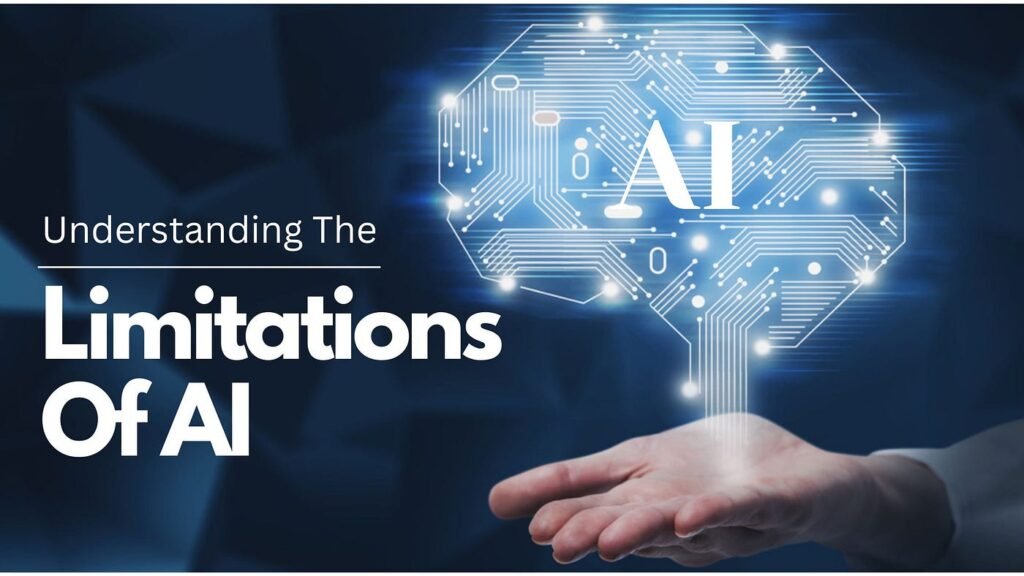
Ethics and Limitations of AI
As Artificial Intelligence (AI) becomes increasingly powerful and widespread, it’s essential to understand not only its capabilities but also its ethical concerns and limitations. While AI can improve lives, increase efficiency, and drive innovation, it also raises serious questions about privacy, bias, accountability, and control.
This topic is a key part of every responsible Free AI Course, helping learners think critically about the implications of AI in the real world.
Ethical Concerns in AI
Bias and Discrimination
AI systems learn from historical data. If that data contains biases—racial, gender, or otherwise—AI can unintentionally reinforce and amplify discrimination. For example, hiring algorithms trained on biased datasets might favor certain groups over others.Lack of Transparency (Black Box Problem)
Many AI models, especially deep learning networks, make decisions that are hard to explain. This lack of transparency can be dangerous, especially in fields like healthcare or criminal justice.Job Displacement
Automation powered by AI may lead to the replacement of human workers, particularly in repetitive or manual jobs. This raises social and economic concerns about unemployment and the future of work.Privacy Violations
AI systems often rely on large amounts of personal data. Without strict regulation, there is a risk of invasive surveillance and misuse of sensitive information.Autonomy and Control
As AI systems become more advanced, who is responsible when they make a mistake? Can they be controlled if they act unpredictably? These questions highlight the importance of ethical AI governance.Limitations of AI
Despite its impressive capabilities, AI still has important limitations:
Lacks Common Sense: AI can’t truly understand the world the way humans do.
Dependent on Data: Poor-quality or insufficient data leads to poor AI performance.
Narrow Scope: Most AI today is task-specific (ANI) and cannot generalize like humans.
Energy Consumption: Training large AI models requires enormous computational resources.
Tools and Platforms Used in AI
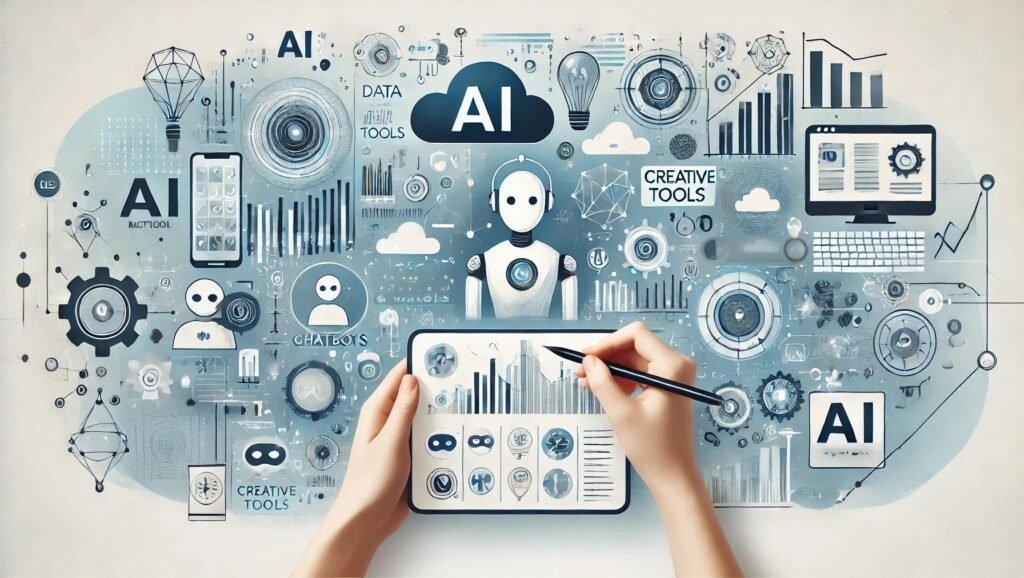
Tools and Platforms Used in AI
Artificial Intelligence development requires powerful tools and platforms to build, train, test, and deploy models efficiently. These tools make AI more accessible by offering user-friendly interfaces, robust libraries, and scalable computing power. Whether you’re a beginner or an advanced developer, familiarizing yourself with these tools is an essential part of any Free AI Course.
1. TensorFlow
Developed by Google, TensorFlow is one of the most widely used open-source frameworks for machine learning and deep learning. It supports building and training complex neural networks and offers tools for deployment on cloud, web, or mobile platforms.
Best For: Deep learning models, neural networks, production-level applications.
2. PyTorch
Created by Facebook, PyTorch is another popular deep learning framework known for its ease of use and flexibility. It’s especially favored by researchers and academics because of its dynamic computational graph and simple syntax.
Best For: Prototyping, research projects, NLP models, computer vision.
3. Google Colab
Google Colab is a free, cloud-based environment that allows users to write and run Python code in a Jupyter Notebook interface. It provides free access to GPUs, making it perfect for beginners who don’t have powerful local machines.
Best For: Learning and experimenting with AI models without setup hassles.
4. Scikit-learn
Scikit-learn is a simple and efficient tool for data mining and analysis. It provides easy-to-use implementations of many classical machine learning algorithms like regression, classification, clustering, and more.
Best For: Classical ML models, small to medium datasets.
5. OpenAI API / ChatGPT
OpenAI offers powerful language models like ChatGPT, which can be integrated via API for tasks such as content generation, conversation, summarization, and more. It simplifies NLP implementation without building models from scratch.
Best For: Language processing, chatbots, content generation.
6. IBM Watson Studio
IBM Watson offers enterprise-grade tools for data analysis, model building, and deployment. It’s ideal for businesses looking to integrate AI into their systems securely and at scale.
Best For: Enterprise AI solutions, automated ML, cloud-based deployment.
Free Resources and Tools for Learning
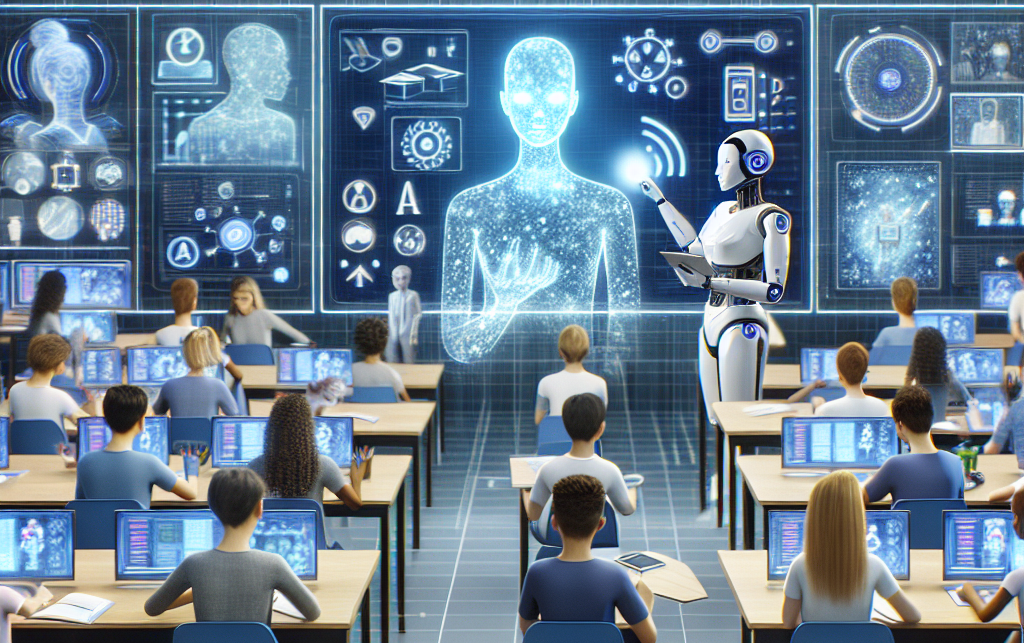
Free Resources and Tools for Learning AI
Artificial Intelligence (AI) is one of the most exciting fields in today’s tech landscape—and the best part is, you can start learning AI for free. With a wide variety of free tools, platforms, and learning resources available online, anyone with curiosity and internet access can begin their AI journey. In this module of your Free AI Course, we’ll explore some of the best free resources to help you get started.
Free Online Courses and Platforms
Coursera (AI for Everyone by Andrew Ng)
A beginner-friendly course that explains what AI is and how it’s transforming industries—no coding required.edX (Introduction to Artificial Intelligence by IBM)
Covers AI basics, machine learning, deep learning, and real-world applications.Google AI
Offers tutorials, research papers, and crash courses on AI and Machine Learning, including the popular Machine Learning Crash Course.Kaggle Learn
Provides short, hands-on tutorials in data science and ML, including Python, pandas, and deep learning.Fast.ai
A practical, coding-focused deep learning course that helps you build models with real-world impact using PyTorch.
Free Tools and Platforms
Google Colab
A free cloud-based notebook that supports Python and provides free access to GPUs. Perfect for experimenting with AI projects.Scikit-learn
A free machine learning library for Python that’s beginner-friendly and great for learning algorithms.TensorFlow & PyTorch
Open-source deep learning frameworks widely used in the industry. Tons of free tutorials are available online.Hugging Face Transformers
Offers free access to pre-trained NLP models, APIs, and an active community.OpenAI Playground
A free tool to experiment with language models like ChatGPT for text generation, summarization, and more.
Career Opportunities in AI

Career Opportunities in AI
Artificial Intelligence (AI) is not just transforming technology—it’s creating exciting career opportunities across every industry. From healthcare and finance to marketing and education, AI is driving innovation and demand for skilled professionals. As part of your Free AI Course, understanding the career landscape in AI will help you plan your learning path and long-term goals.
Why Choose a Career in AI?
AI careers offer high salaries, global demand, and the chance to work on cutting-edge solutions. With businesses investing heavily in AI-powered tools, there’s a growing need for developers, analysts, researchers, and strategists who can apply AI to solve real-world problems.
Top Career Roles in AI
Machine Learning Engineer
Builds, trains, and fine-tunes machine learning models. Strong in Python, data structures, and algorithms.Data Scientist
Analyzes complex data sets to extract meaningful insights and build predictive models using AI and ML techniques.AI Research Scientist
Works on the development of new AI algorithms and models. Typically requires a strong academic background in mathematics and computer science.Natural Language Processing (NLP) Engineer
Specializes in building AI systems that understand and process human language, such as chatbots and voice assistants.Computer Vision Engineer
Develops systems that can interpret and analyze visual data, used in facial recognition, autonomous vehicles, and medical imaging.AI Product Manager
Bridges the gap between technical teams and business needs, helping shape AI-driven products and features.Robotics Engineer
Designs intelligent robots capable of performing tasks autonomously in manufacturing, healthcare, or logistics.
Skills in Demand
Programming (Python, R, Java)
Machine Learning & Deep Learning
Data Analysis & Visualization
Statistics & Linear Algebra
Cloud Platforms (AWS, Azure, GCP)
Tools like TensorFlow, PyTorch, Scikit-learn
Future Scope of AI

AI Today: A World Already Changed
AI is no longer confined to research labs or big tech companies. It’s in your phone, your car, your shopping apps, and even your healthcare systems. Businesses use AI to predict trends, improve customer service, and optimize operations. Educators use AI to personalize learning, while doctors use it to analyze diagnostics more accurately.
Through this Free AI Course, you’ve explored foundational concepts like machine learning, deep learning, NLP, and ethical considerations. This knowledge equips you to not just understand AI—but to start creating with it.
Future Scope of AI: What’s Next?
The future of AI is full of potential and transformation:
Artificial General Intelligence (AGI): AI systems that can learn and think like humans across various tasks may be achievable within decades.
AI in Healthcare: More personalized, predictive, and preventative care using AI-powered diagnostics and treatment planning.
Autonomous Systems: Widespread use of self-driving vehicles, drones, and smart robotics in everyday life.
Creative AI: AI will increasingly assist in writing, art, music, and film creation.
AI for Social Good: Applications in disaster prediction, climate modeling, and education for underserved communities.
At the same time, AI will raise new challenges especially in ethics, job displacement, and privacy. Responsible development and informed regulation will be essential as AI becomes more powerful and integrated into society.
Final Thoughts
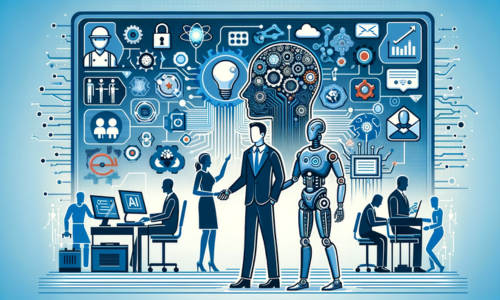
As we reach the end of this Free AI Course, it’s important to reflect on how far Artificial Intelligence has come and where it’s going. From automating simple tasks to enabling complex decision-making, AI has already reshaped the world. Yet, we are only at the beginning of what this powerful technology can achieve.
FAQs – Free AI Course
1. Who is this Free AI Course for?
This course is designed for beginners, students, working professionals, and anyone curious about Artificial Intelligence—no prior programming or technical background is required.
2. Do I need coding knowledge to start this course?
No. The course starts with foundational concepts and includes beginner-friendly tools. However, basic knowledge of Python will be helpful for hands-on exercises.
3. Will I get a certificate after completing the course?
Yes, you will receive a Free Certificate of Completion once you finish all the modules and pass the final quiz or assignment (if applicable)
4. How long does the course take to complete?
You can complete the course in 2–4 weeks, depending on your pace. It is self-paced, so you can study at your convenience.
5. Are there any hidden charges?
No. The course is completely free. Some external tools used (like cloud services) may have optional premium features, but free options are always provided.
6. Can I access the course on mobile or tablet?
Yes. The course is accessible on desktop, mobile, and tablet, making it easy to learn from anywhere.
7. Will this course help me get a job in AI?
It provides a solid foundation and introduces key tools and concepts. To pursue a career in AI, you may need to follow up with more specialized training or certifications.
8. Are there hands-on projects included?
Yes! Practical assignments, mini-projects, and case studies are included to help you apply your learning.




